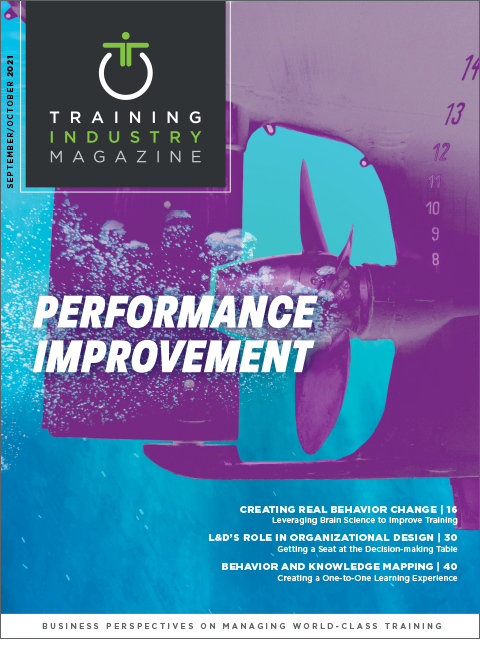
Published in Sept/Oct 2021
Training professionals already know that performance improvement and training are not the same thing. Performance is based on much more than knowledge. After all, knowing how to drive fast does not automatically qualify someone for NASCAR!
True performance improvement requires analysis and a willingness to modify management practices, business processes, tools and established methods of operation to increase effectiveness, efficiency and output. Without these considerations, the best a training practitioner can hope to achieve is knowledge transfer and improved employee motivation.
This truth is often lost on our non-training stakeholders. It is a lot easier to request training than it is to conduct a root cause analysis of a performance problem. So how can training managers properly level-set expectations when they are asked to improve employee performance?
Remember that many stakeholders do not know that there is a difference between knowledge and performance. Rather than push back on a request and cause frustration, introduce the concept of performance improvement versus training in your intake process.
Terminology Matters
Use terminology that differentiates training events from performance improvement projects. Review your project request forms and intake documents and look for ways to showcase the difference between training and performance improvement. Example:
The goal of this project is to:
- Inform staff.
- Communicate new process, tool or guideline information that is required for operational purposes.
- Educate staff.
- Conduct training for knowledge transfer and job preparation purposes.
- Improve staff performance.
- Work with management to identify and solve for a specific performance-related challenge.
Introducing the concept of performance improvement through the intake process can help stakeholders understand the difference between training and performance improvement.
Use Data
Request data-based support for training directives and quantifiable post-training evaluation criteria. Help your stakeholders to identify which performance challenges are actual priorities by having them quantify their perceived problems and their desired results. If there are no metrics to support their training request and no quantifiable post-training goals, it may help them to realize that they do not have a performance-related problem.
Provide Feedback
Make performance analysis feedback part of your instructional development process. Always ask to speak with staff who are meeting or exceeding the desired business goal before creating content for performance-motivated training. Managers rarely know why their star performers succeed where others fail. It may be up to you to find out and to share that information. By sharing direct employee feedback from star performers, stakeholders can learn about the non-training factors that contribute to employee success.
Tie Success Criteria to the Defined Goal Before the Project
If stakeholders want staff educated, then the number of people trained, as well as acceptable Level 2 assessment scores, should suffice as success standards. If stakeholders want behavior change, they need to be willing to discuss the factors that impact employee behavior, including resources, work environment and employee morale. If an increase in output is desired, stakeholders must be open to a discussion about current tools and resources.
Help your stakeholders align their training expectations with their desired performance results. Do not allow your training department to be blamed for poor performance that education alone cannot fix. Accountability should be rooted in reality, not fantasy. So, keep it real my friends!
